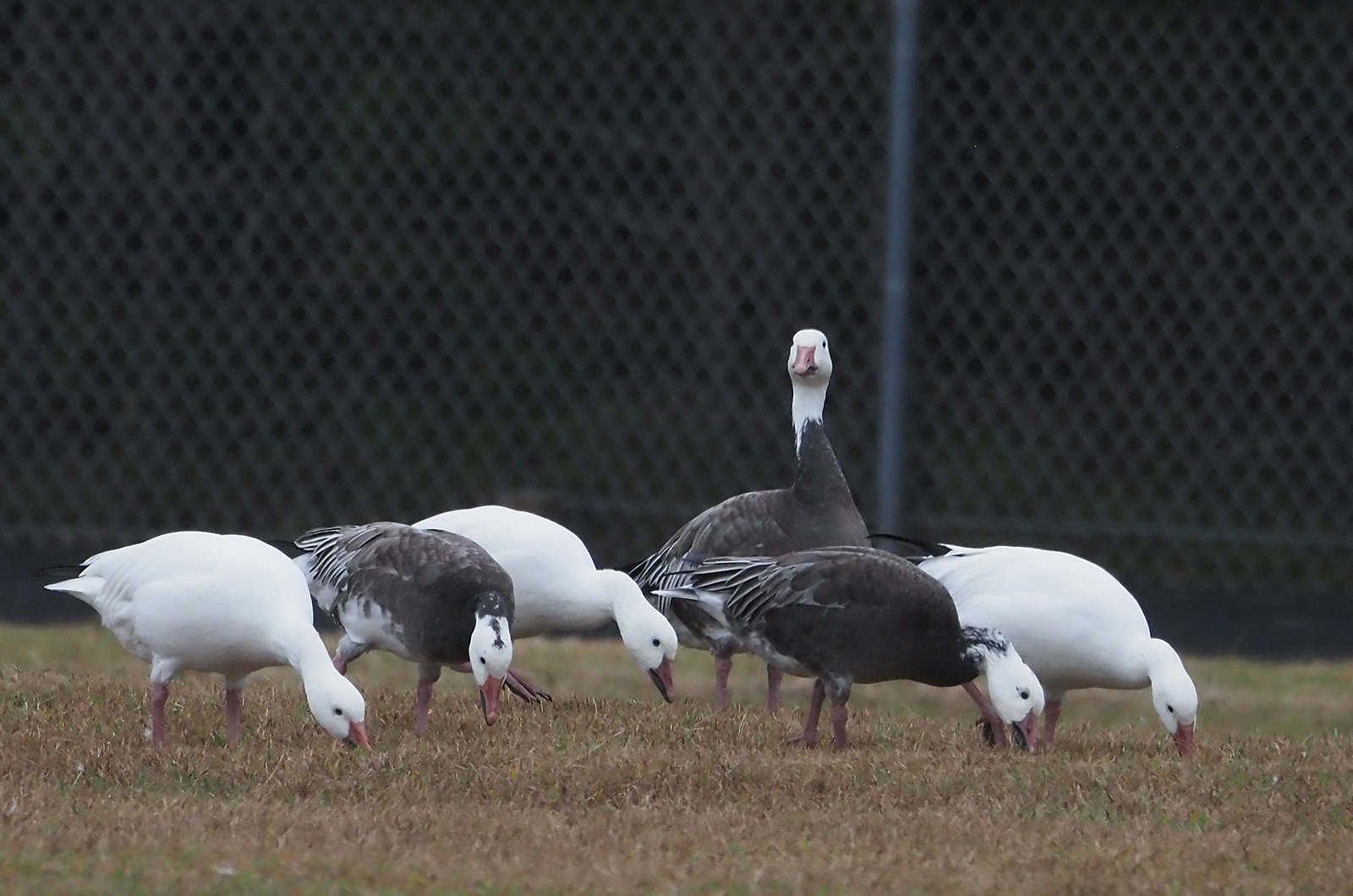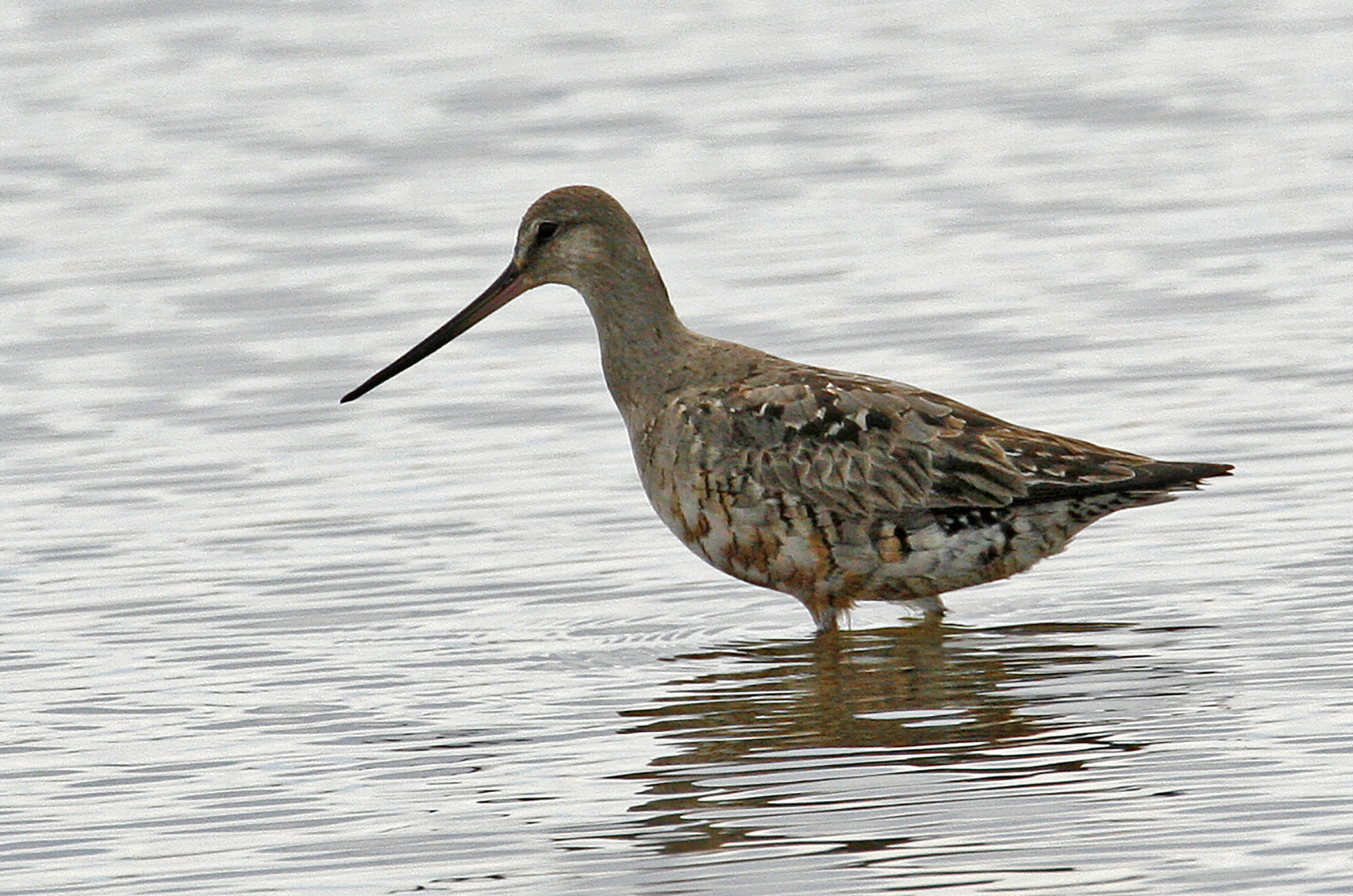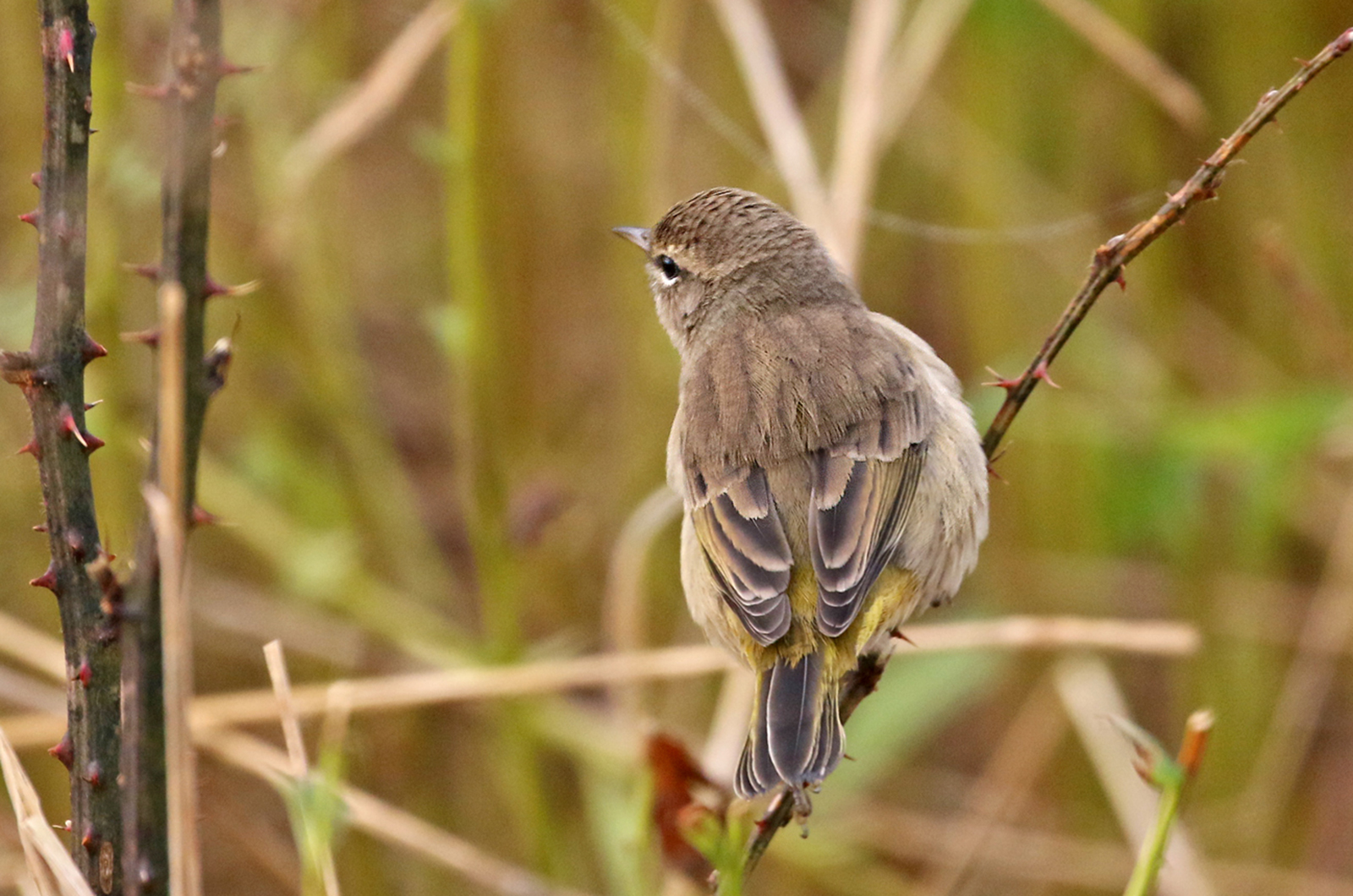The seasons have changed from summer to autumn; you can feel it in the air. Southbound migrants are passing through from late June into January, but the species change as the season progresses.
Our diverse winter-resident waterfowl are starting to show up, as are seed and fruit-eating finches. Migrants heading further south still dominate the shorebird scene but our winter residents are becoming more common. Most, but not all, of the insect-eating migrants have already passed through; there still are lots of warblers around but their diversity is lower.
On the waterfowl front, Tim Johnson spotted an adult snow goose within a flock of Canada geese at Katama Farm on Oct. 8. Nancy Nordin also saw it that day.
I spotted a pair of harlequin ducks off Moshup Beach on Oct. 6. That date is really early for this seaduck; they usually do not show up until November. The bright bluish-gray and white male is unmistakable, and its much smaller size was easily visible as it was within a flock of larger seaducks: 30 common eiders, five surf scoters and 15 white-winged scoters.
Sarah Quadt and Sam Denenberg found a red-breasted merganser off Lucy Vincent Beach on Oct. 8. This is also early for this species, as most will arrive in November. Sarah and Sam are also the first to find all three species of scoters — 15 surf scoters, 60 white-winged scoters and 20 black scoters — as well as 70 common eiders, although a number of observers have spotted flocks of two species of scoters. These species are fairly common winter residents that will become more abundant as the season progresses.
Sam Denenberg spotted six American wigeon on Oct. 7 at the Oak Bluffs pumping station, a first for the season. He also saw a gadwall there.
Sparrows and finches are appearing now. A western species — the lark sparrow — with its distinctive brown, white and black face pattern was seen by Ken Magnuson on Oct. 4 at the Edgartown Golf Club. Coincidentally or not, Susan Whiting and Bob Shriber found one in Aquinnah the next day. These two sightings might have been the same bird even though the sightings were at opposite ends of the Island.
Bob Shriber and Susan Whiting also found a dark-eyed junco and a white-throated sparrow in Aquinnah on Oct. 5. Tony Lima spotted another white-throated sparrow on Oct. 6 along Oyster Pond Road, while the Martha’s Vineyard Bird Club observed a dark-eyed junco at the Gay Head Cliffs on Oct. 8. Suffice it to say that many more individuals of these two fairly-common winter residents will be showing up soon.
Less common is the dickcissel found twice by Matt Pelikan, one on Oct. 3 at the Gay Head Cliffs and two at Dogfish Bar on Oct. 9. Pete Gilmore and Lanny McDowell spotted one at Thimble Farm on Oct. 6. Chris Scott also saw one at the Gay Head Cliffs on Oct. 9. Though this species often hangs out with house sparrows, it can be found just about anywhere, even at feeders, and is easy to distinguish if you hear its distinctive call note.
Things are winding down on the shorebird front, leaving us mostly with sanderlings, greater yellowlegs, black-bellied plovers and ruddy turnstones. Walt Looney had a good week finding shorebirds; he found a Hudsonian godwit at Little Beach on Oct. 5. That bird was also seen by Nancy Nordin that same day. On Oct. 6 he saw one semipalmated sandpiper, one short-billed dowitcher, and seven greater yellowlegs at Little Beach.
On Oct. 6 Cynthia Bloomquist and Thaw Malin visited Little Beach and found a semipalmated plover, a piping plover and two willets. The next day Katherine Oscar went to that same beach and found a dowitcher, but we can not be certain whether it was a short-billed dowitcher or a long-billed dowitcher. Little Beach is the place to go for shorebirds this week!
Two lingering common terns were spotted this week. Tony Lima saw one on Oct. 6 at Oyster Pond and Scott Yanco saw another on Oct. 8 at Dike Bridge. Black skimmers are also lingering: Katherine Oscar saw some flying around Katama Bay on Oct. 6 and I counted nine at Norton Point on Oct. 9.
Although the migration of insect-eating birds is winding down, there still are some passing through, just in smaller numbers. Bob Shriber and Susan Whiting had a good day in Aquinnah on Oct. 5 when they spotted three species of vireo: one blue-headed, one Philadelphia and two red-eyed, and six species of warblers: one black and white, one common yellowthroat, one parula, one pine, one Wilson’s and 15 yellow-rumped. Remember that we had 20 species seen in a week a few weeks back.
On Oct. 6 the troika of Nancy Nordin, Cynthia Bloomquist and Thaw Malin visited Dogfish Bar and found a northern waterthrush, a Cape May warbler, a palm warbler and seven yellow-rumped warblers. Also on Oct. 6 Lanny McDowell and Pete Gilmore saw two American redstarts and two palm warblers at Thimble Farm.
Walt Looney adds an ovenbird, which he saw on Oct. 7 along North Farm Trail on Chappaquiddick. Charles Morano found a yellowthroat, two pine warblers and six yellow-rumped warblers on Oct. 7 at Pecoy Point. That same day the troika of Nancy Nordin, Bob Shriber and Nancy Weaver found three species of warblers at Dogfish Bar: one northern parula, one palm warbler and 22 yellow-rumped warblers.
Scott Yanco found a bay-breasted warbler and a palm warbler on Oct. 8 in downtown Vineyard Haven. Also that day the Martha’s Vineyard Bird Club visited Gay Head Moraine, where they observed a first of the season western palm warbler, which does not have the yellow undersides of the eastern race.
Please email your sightings to birds@vineyardgazette.com.
Robert Culbert is an ecological consultant with Nature Watch LLC, living in Vineyard Haven.








Comments
Comment policy »